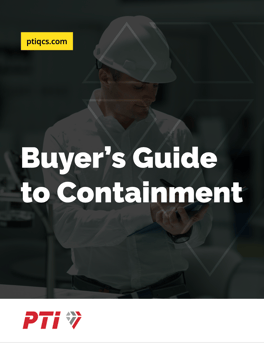Effective containment is more than a stopgap measure when there is a quality disruption. It should create value in your organization by seamlessly integrating with your existing quality systems to identify the root causes of known issues and implement safeguards against future potential issues. When managed effectively, containment can positively impact your bottom line in several ways.

But many companies view it as a cost center - one they would rather avoid but are stuck with. As such, one of the primary factors considered when selecting a containment provider is their cost per hour. But this isn’t always an effective way to evaluate your options. The bottom line rate charged by a containment provider is only one part of the equation. When containment providers compete solely on price, they fail to take into account several other factors that can influence the quality of the work they do and may overstate their relevant experience.
With a proactive approach to containment, it’s important to rethink the role of price and what the actual cost of hiring someone will be. Let’s take a closer look at the myth of price and what factors are most important to evaluate when you choose your next containment services provider.
The True Cost of a Containment Project
Cost per hour is only one of three factors that should influence the actual cost of containment (not to mention several indirect costs that can have an impact on your business).
Cost = Hours X Cost Per Hour + Materials
The hours required to complete a containment project will ultimately determine the total cost. If you hire a provider with a 30% lower hourly rate, but it takes them two or three times longer to complete the project, you’re still paying more for that provider.
More importantly, there is the cost of materials that result from defective parts making their way into your supply chain. If a less-skilled, lower-paid source of labor (including contractors), handles your inspections, there is a higher risk of missing something that then creates even greater problems.
Price is relative to several factors, but most importantly is the expertise and experience of the people you hire. If they truly have the background needed to inspect your parts and have the technology and training to do it effectively in less time, the result is a lower overall cost and higher level of quality. A proactive, value-added model for containment is designed to do this by:
- Digitally mapping processes to support your operations and improve transparency in the inspection process while supporting your in-house quality team.
- Reducing disruptions before they occur with industry 4.0 technology and application-specific experience and training.
- Quickly addressing quality issues with a carefully documented inspection process, informed by decades of combined experience.
The result is a faster, less impactful resolution to a quality issue without ongoing inspections or consistent issues that cause that perceived cost-center to balloon even larger.
Turning Containment from Cost Center to Value Creator
The real cost of a containment project includes the inspection process itself (the formula above), along with several indirect expenses such as:
- Additional disruptions
- Parts making it through inspection
- Information in quality, quantity and time
If it takes several months to get quality issues under control, the initial cost expands rapidly, but so too do the risks of additional issues. Your SQA Engineers spend almost all of their time fighting fires instead of devising ways to avoid them.
When containment is designed to minimize disruption and prevent future issues, it doesn’t matter what the cost per hour is. It becomes a value-creator and integral part of your business strategy; not just another cost center.
A proactive approach to containment does this in several ways, including:
- Ongoing Support - When you have a containment provider already on call, you can leverage their experience and data to build a preventive plan. Rather than a cost center, containment becomes a quality supplement that addresses issues before they develop.
- Digitization - Digital inspection technology provides substantial insights not only into your own quality issues but comparable issues faced by other manufacturers, along with data-driven best practices on how to address those issues. Proactive containment can capture data around plant operations, quality issues, and front line performance to inform your continuous improvement efforts.
- Capturing Savings - Beyond prevention, proactive containment helps improve operations and uncover new sources of value in your organization.
 While the overall cost of containment is important to evaluate, the measure by which that cost is often calculated is inaccurate. Evaluate new sources of value with a proactive, data-driven containment provider that leverages technology to help improve your organization.
While the overall cost of containment is important to evaluate, the measure by which that cost is often calculated is inaccurate. Evaluate new sources of value with a proactive, data-driven containment provider that leverages technology to help improve your organization.
Learn more about the questions you should ask your containment provider to ensure you are getting the best service in our Buyers Guide to Containment:



